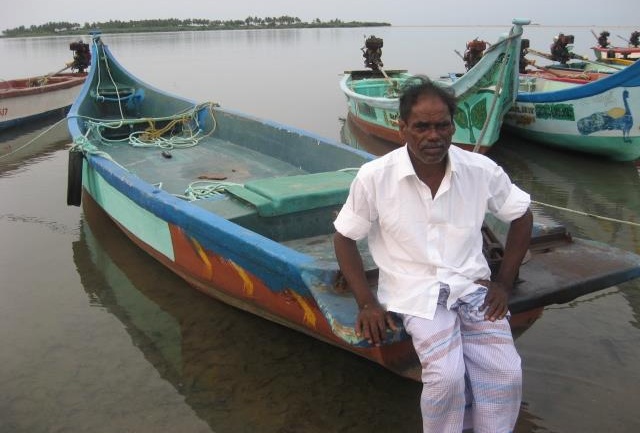In Fiji, Habitat for Humanity is working in a remote community, Tavuya in the Province of Rewa.
Fiji is one of the most at risk countries when it comes to natural disasters. Tavuya alone typically sees a cyclone once a year and flooding every five years – the severity of which is predicted to increase as a result of climate change.
With the help of Habitat supporters and Communities for Communities we have begun a safe shelter awareness program. This involves training community members on disaster risk reduction techniques and safe construction training. The purpose of both is to improve community resiliency so families prepare for, and homes can better withstand natural disasters.
Tavuya is a small knit community with a population of 250 and 52 houses. This includes Kelesi and his family.
Kelesi is partially blind. He is supported by his wife and adult son, whose own family also lives with them.
Kelesi wiped away tears as he told us how a group of volunteers from Communities for Communities helped him over one week to build their new home.
“I am very grateful to have a new home,” said Kelesi. “Whatever savings we are able to make we put toward the house.”
Most families in Tavuya, including Kelesi’s work in farming. Many grow fruit and vegetables on their land which is used for food. This allows families to put aside money they otherwise would spend on food, and save for the future. From this, and their income selling coconuts, Kelesi’s family have already been able to add on a toilet and bathroom facility which is easier for him to access.
“The structure of the home is so strong,” said Kelesi. “I feel younger than before with this home! I feel so happy to have received help.”
With your continued support the community of Tavuya will be able to prepare for and reduce the effects of natural disasters. Along with building new homes, Habitat for Humanity will also:
- Build seven cyclone proof transitional shelters.
- Upgrade 32 homes according to “Build Back Safer” training techniques which community members will be learning and implementing.
- Adapt four homes for persons with disabilities.
- Retrofit a kindergarten with strapping and bracing.
- Construct a disaster resilient footpath.
- Improve water and sanitation systems.
Find out more


